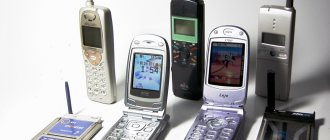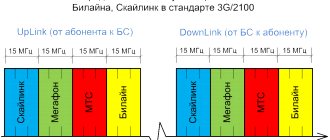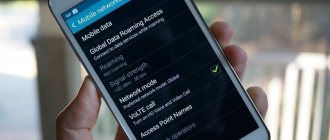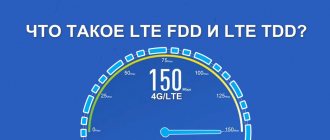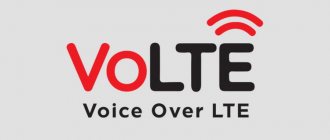Not long ago, many new standards for mobile and Internet communications appeared, many users began to be interested in the question, WCDMA or GSM - what is the difference, how CDMA differs from them. GSM is undoubtedly the most popular mobile phone standard in the world.
Next in the line are CDMA, WCDMA, NMT. The similarity in names led to much confusion between them. The difference between WCDMA and CDMA goes far beyond throughput ratio. More importantly, WCDMA was not derived from CDMA, but was developed from scratch.
What is GSM
GSM or Global System for Cellular Communications is the most popular wireless technology used for communication. 2G ) digital cellular networks
It originally started as a circuit switched network, but later packet switching was implemented after the integration of General Packet Radio Service (GPRS)
Widely used GSM frequency bands are 900 MHz and 1800 MHz . Uses a digital radio interface in which analog signals are converted to digital signals before transmission. The packet forwarding speed is 270 Kbps .
Global System for Mobile Communications (GSM) is currently used in approximately 80% of mobile phones worldwide. There are more than three billion users of this technology.
What is CDMA
An abbreviation for Code Division Multiple Access, CDMA or cdmaOne is a telephone standard in which many of the channels in use are compressed within a single bandwidth . This uses "spread spectrum" technology, which distributes electromagnetic energy to make it easier to receive a signal with a wider bandwidth.
As a result of this, many people using different cell phones may be transferred to the same channel to share the frequency band
Features of dual-standard phones
In addition to the functional contact book, where one subscriber can be assigned 4 or more numbers at once, as well as several email addresses, CDMA-GSM cellular phones have several more significant differences:
- These are mainly monoblocks. Although recently you can find sliders or clamshells.
- Almost all phones support microSD.
- Cell phones are equipped with a camera of at least 2 megapixels. Of course, as popularity grows, so does the line of phones on the market. More and more new manufacturers are joining the competition, designs are being developed, technical capabilities and characteristics are being added, etc.
In general, these models are standardized for familiar smartphones and phones. Manufacturers try to create them in a familiar design and with the same set of functions. In some cities, CDMA phones are increasingly being used. Odessa, for example, as a port center, provides the opportunity to use all models. There is, of course, less choice within the country.
What is WCDMA
Cellular WCDMA, which is an abbreviation for Code Division Multiple Access or Wideband CDMA, is a mobile phone standard that combines CDMA and GSM to create an entirely new system .
This is one of the most important attributes when it comes to the third generation mobile network (3G mobile phone technology). Although the term WCDMA is often used interchangeably with UMTS (Universal Mobile Telecommunications Systems), this is technically incorrect since WCDMA is just an example of UMTS
Does Android Pay work with the Mir card?
Dual standard phones
As you can see from the article, both CDMA and GSM have their strengths and weaknesses. But for our people, it’s simply vital to use everything at once. That is why the dual-standard CDMA-GSM phone was invented. It combines all the advantages of both systems.
What is he? This is a completely ordinary mobile phone with an improved battery that can withstand more calls and conversations. In design and functionality, it is practically no different from its standard relatives.
Such cell phones have recently become increasingly popular. Therefore, gradually all the world's mobile brands began to produce separate lines of two-standard gadgets.
For example, CDMA-450 phones are actively promoted by Skylink. Also in various stores you can find models from Nokia, Huawei, Pantech, HTC and many others.
Technology comparison
Users are wondering which is better, WCDMA or GSM, what is the difference between these two standards?
It is difficult to give a definite answer, because all technologies are unique in their own way.
- As the name suggests, VSDMA uses a wider bandwidth than its counterpart. While SDMA uses sets that are only 1.25 MHz wide, VSDMA uses bands that are 5 MHz wide.
- Both mobile phone standards also differ in terms of the technologies with which they are grouped; since VSDMA uses 3G technology and SDMA uses 2G technology. The fact that CDMA uses 2G technology also puts it in direct competition with the most widely used GSM standard for mobile phones, which in turn puts it in competition with GSM-CDMA.
- On the other hand, WCDMA standard is used along with GSM to provide 2G and 3G technologies in a certain area. (It is important to note that 3G technology, represented by CDMA-CDMA2000 or EV-DO, is a direct competitor to WCDMA.) The fact that WCDMA is part of the 3G system makes it faster than its 2G counterpart.
In the end, it is safe to conclude that WCDMA is faster than CDMA , and this explains why many people change base. Its biggest advantage is its ability to work in tandem with GSM. If current trends are to be believed, WCDMA is expected to win this battle sooner or later.
Description and characteristics
Please note that these are not interchangeable technologies, but two methods of communication that compete with each other. What is the difference between CDMA and GSM? We'll talk in detail below.
The connection of two subscribers within the framework of this technology occurs through the allocation of a frequency spectrum, identification of connections is carried out using special codes.
For now, let's look at the advantages of the technology:
CDMA-450 or CDMA 2000 appeared in 2000 - the standard operates at a latitude of 450 MHz and was actively spreading in Russia, mainly the CDMA communication standard was present in Moscow.
At the moment, in 2021, all CDMA operators in Russia are closed; not a single telecommunications company provides such services. In our country, a more familiar format is used - GSM.
What other network modes are there?
There are several more network modes:
- TDMA (Time Division Multiple Access). This is a channel access method for public networks. It allows multiple people to simultaneously use the same frequency channel by splitting the signal into different time periods. Users send data in quick succession, one after another, using their own time frame. This allows multiple stations to share the same sending medium (such as an RF channel) while using only a portion of the channel's capacity. TDMA is used in 2G digital mobile cellular systems such as GSM, PDC and the iDEN standard.
- EVDO (Evolution-Data Optimized or Evolution-Data Only). It is a telecommunications standard for sending data packets wirelessly over radio signals, typically for broadband Internet access. It uses multiplexing techniques including Code Division Multiple Access (CDMA) as well as Time Division Multiplexing (TDM) to maximize individual user throughput and overall system throughput. The standard has been adopted by many mobile service providers around the world, especially those that previously used CDMA networks. EVDO was designed as an evolution of the CDA2000 standard that will support high data rates and can be deployed alongside wireless operator voice services.
- UMTS (Universal Mobile Telecommunications System). This is a third generation mobile standard. Works with GSM-based networks. Created by 3GPP (3rd Generation Partnership Project), UMTS belongs to the standard set of the international standard IMT-2000. It is often compared to the CDMA2000 mode, designed for networks running on competing cdmaOne technology. UMTS uses wideband code division multiple access (W-CDMA) technology to guarantee greater spectral efficiency and capacity for mobile network operators.
- HSPA+ , or Enhanced High Speed Packet Access. HSPA or HSPA+ is a technical standard for wireless broadband communications. HSPA+ extends widespread WCDMA-based 3G networks with faster end-user speeds that are comparable to newer LTE networks. HSPA+ was first defined in the 3GPP technical standard version 7 and expanded further in subsequent releases. HSPA+ is the evolution of high-speed packet access and provides data transfer rates of up to 168 megabits per second (Mbps) to the mobile device and 22 Mbps from the mobile device.
- LTE "Long Term Evolution". This is the generally accepted 4G wireless standard. All US providers use it. While most phones in 2021 use LTE for data, US manufacturer Sprint's devices still use CDMA for all voice calls, and Verizon still has a network list for phones that will work on its network.
How to connect and configure LTE on your phone
Smartphones
In this part of the section, we will discuss dual-standard smartphones. At the moment, both second-generation standards described above are widespread throughout the world and cannot be used simultaneously - but there is one exception.
These are special devices designed for use in two networks simultaneously - the capabilities are expanded by installing special software. Smartphones are equipped with the ability to receive signals in two different ways, specific to these networks.
There are quite a large number of smartphone manufacturers offering dual-band products with two SIM cards - these are giants such as Xiaomi, Lenovo, Huawei, HTC and many others. In addition, you can purchase a modem that operates in the desired range.
Source
Briefly about CDMA.
Thus, using different pseudo-random sequences (codes) it is possible to organize several independent data transmission channels in the same frequency band.
It must be said that the above description of DSSS technology is greatly simplified, although I hope it gives an idea of how it all works.
And why is CDMA better than others?
In frequency division systems (both FDMA and TDMA), there is a problem of so-called “reuse” of frequency channels. To avoid interfering with each other, neighboring base stations must use different channels. Thus, if a BS has 6 neighbors (the most frequently considered case, the zone of each BS can be represented as a hexagon, and everything together looks like a honeycomb

